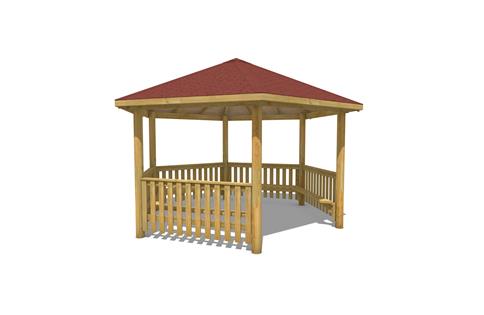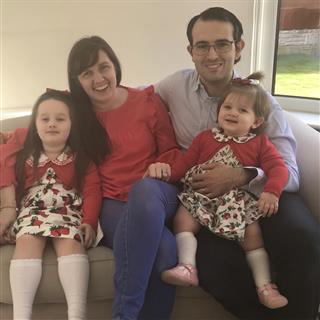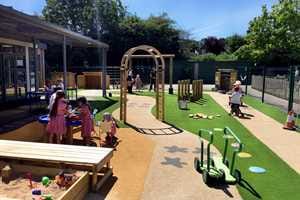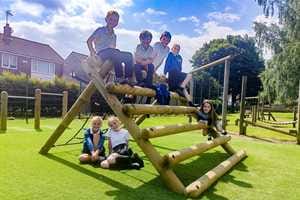
Lesson Ideas and Activities
Learn about the meaning of maths mastery and how it is key for children to develop deep and sustainable learning.
The term ‘teaching for mastery' is often heard in the primary school classroom. Achieving ‘maths mastery’ means that children develop a deep, secure knowledge of the subject which they can apply to different contexts and other areas of learning.
Teaching for mastery encourages all pupils to believe that by working hard they can achieve mathematical success.
Pupils develop a solid understanding of maths skills and topics being taught before they move on to more difficult tasks. A longer time is often spent on key topics in order for children to develop deep and sustainable learning.
How to Teach Maths Mastery?
Maths mastery is based on the Shanghai teaching method where whole classes are taught the same content through interactive teaching methods, ensuring that all children master concepts before moving on to the next part of the teaching sequence.
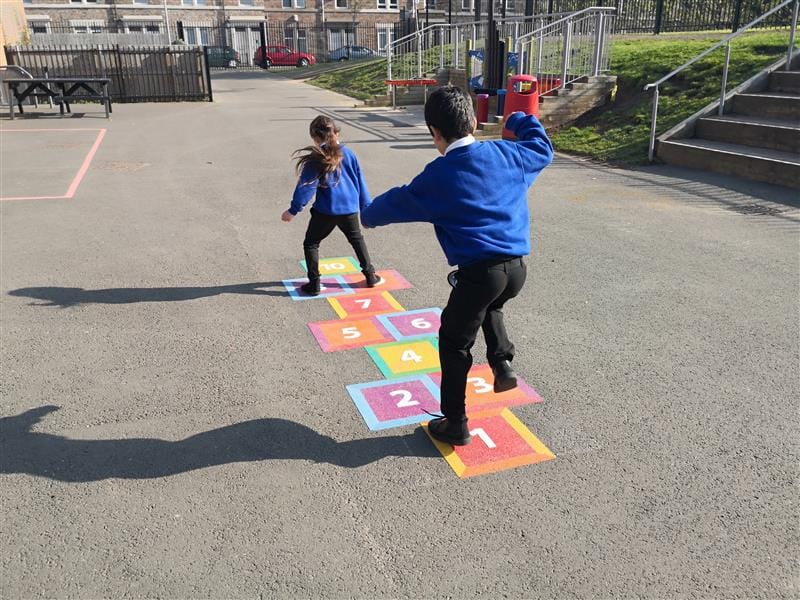
Early intervention identifies pupils who may need more support, allowing them to move on at the same pace as the rest of the class.
Maths lessons are broken down into small connected steps that help children to develop a deep understanding of mathematical concepts and apply them.
When teaching a particular area of maths pupils are exposed to different representations to allow them to make connections and explain their reasoning.
Emphasise Discussion and Recall
There is great emphasis placed on pupil discussion where children work together to share ideas and develop a deep understanding.
Quick and efficient recall of facts and procedures is also essential for children to master difficult mathematical concepts.
Key knowledge such as multiplication tables and addition facts are learnt so that children can automatically recall without reference, this enables pupils to focus on new concepts.
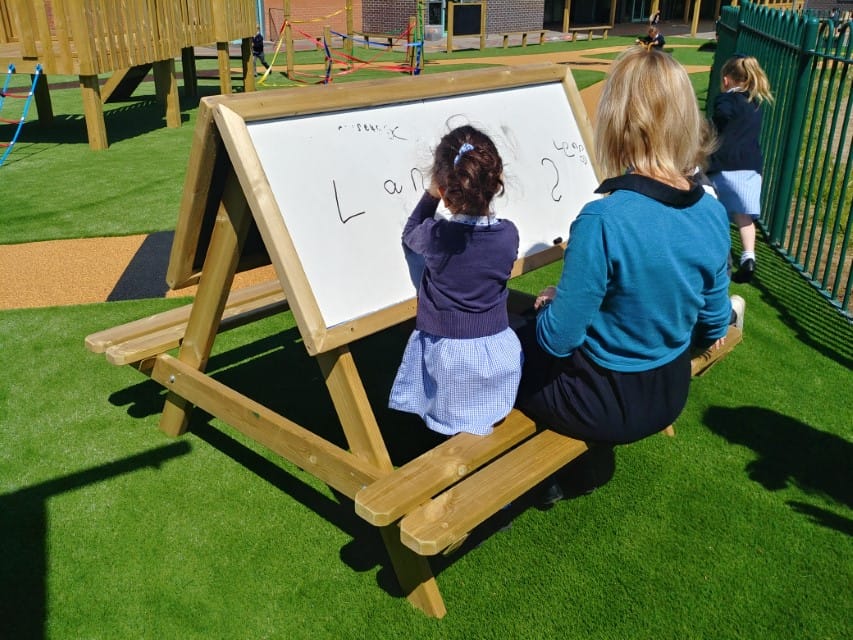
A ‘maths mastery’ approach seeks to develop active learners and mathematical thinkers. Most importantly we want our pupils to be excited about learning maths, to build resilience and develop their own self-confidence in the subject.
The outdoor environment can present many mathematical opportunities for pupils to develop maths learning. An outdoor space is perfectly suited to the use of concrete resources which help children to explore their thinking.
Maths Mastery Resources
From speaking to hundreds of teachers and experts, Pentagon Play has an extensive knowledge on how you can teach Maths to your pupils in a fun and engaging way outdoors.
Numicon Shapes
Numicon shapes are a useful concrete resource used in early mathematics which help children to see connections between numbers. Numicon’s visual and tactile properties support children to easily see one more/less and odd/even numbers.

Children can physically move and manipulate the pieces when learning number bonds by placing pieces on top of each other which greatly benefits visual and kinaesthetic learners to grasp essential early mathematical knowledge.
Acorns, seeds, shells or twigs can be collected in the outdoor environment and can be counted by placing them inside the Numicon shapes.
This helps pupils to recognise quantities and questions can be asked such as: How many would you have if you had double the number of seeds? How many more shells would you need to make 10?
Number Hunts
Pupils in the early years foundation stage enjoy taking part in active number hunts in the outdoor environment. Different visuals can be written on log slices or stones such as numerals, picture representations and pips on dice faces. Children can work together to find, match and order the items.
Very young children need opportunities to match a number symbol with a number of things. Numbers can be placed on resource trays and children can check that no items are missing.
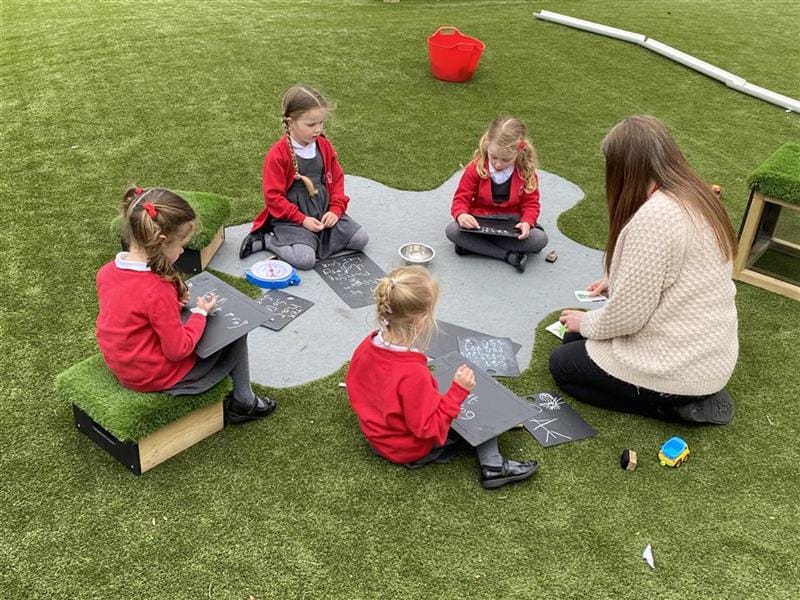
Pupils can put the correct number of resources in the sand pit and read books in the reading corner showing numbers represented in different ways.
Five and Ten Frames
A five or ten frame is another useful, practical resource which is ideally suited for use in the early years foundation stage outdoor environment. Pupils can place natural items inside the frame when learning how to count and subitise.
Children will learn that there are different ways to represent the same number and they will begin to develop their understanding of place value.

Ten frames can be beneficial for supporting mental addition methods. A useful strategy is to emphasise ‘Magic 10.’ If children were asked to calculate 9 + 7 number bond knowledge would be needed to know 9+7 = 9+1+6 =10+6 = 16.
Part-Part- Whole
A part-part-whole ‘cherry’ diagram is a fantastic tool to aid maths mastery when studying number, addition and subtraction and inverse operations.
The diagram shows pupils that a whole object can be split into two or more parts in many different ways helping pupils to understand mathematical relationships.
The parts might look different, each part will be smaller than the whole and the parts can be combined to make the whole. Part-part whole diagrams can be made using hoops in the outdoor area, where children can physically see and move concrete items or they can be drawn on Pentagon’s Scribble Boards.
Number Fact Fluency
It is important for children to develop accurate and rapid recall of multiplication and division facts and number bonds to 20.
Spending a short time each day in the outdoor classroom chanting and learning these facts can lead to improvements in speed, accuracy and understanding when calculating.
A playground multiplication square, that is readily accessible for the children to chant and explore daily will help pupils to make connections between numbers such as the relationship between the 2, 4 and 8 times table.
For children in the early years foundation stage they can link number bonds to practical examples such as items being taken away. For example: Five dolls enter the den and then three come out. How many are in the den?

Weigh the Ingredients!
Pentagon’s Weighing Scales are an invaluable resource that can be used alongside a Mud Kitchen and Sand Box in early years settings.
The use of balance scales is essential for children to form an understanding of comparing mass. Through free exploration pupils will begin to understand which objects are heavier and which are lighter.
Children realise that objects smaller in size can be heavier than large objects and they will begin to predict what will happen when objects are placed on to the scale.

Pupils will start to understand equality when using non-standard units to weigh an object e.g. How many cubes are the same weight as the apple?
When discussing balanced scales, pupils are beginning to understand ‘equals to.’ Through play and exploration learners grasp mathematical concepts and abstract symbols.
Creating Potions in the Mud Kitchen
A Mud Kitchen is a fantastic resource for introducing early years children to volume and capacity, linking to everyday life. As children fill different containers, they will describe them using mathematical vocabulary such as ‘full, nearly full, empty or nearly empty.’
Pupils can investigate how many smaller containers are needed to fill a large container and they will begin to notice patterns. A mud kitchen is a great space to promote mathematical talk as teachers question pupils e.g. Which container do you think will hold more? Shall we check?
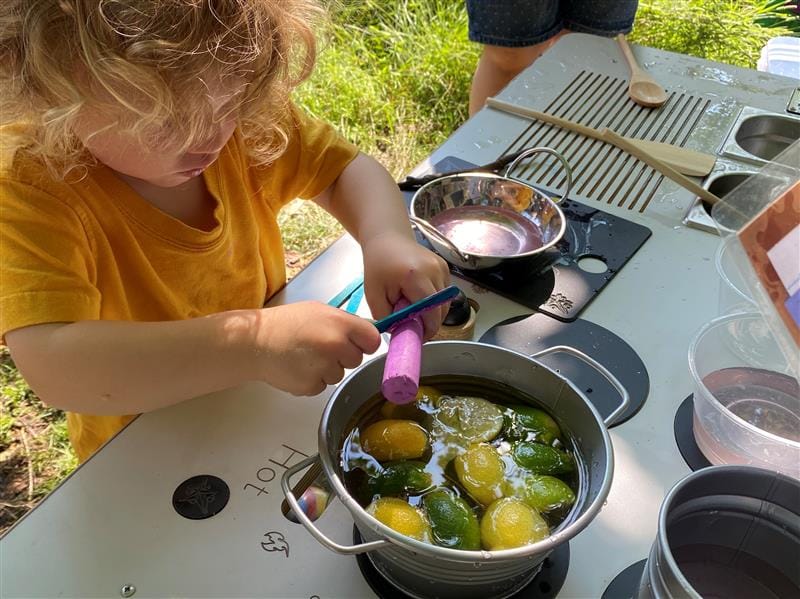
Comparing Length
Playdough is great resource to support eyfs mathematical development. Children can make playdough snakes of various sizes, stating which one is the longest/shortest.
Practitioners can provide a reference item such as a piece of string and ask groups of children to find items in the outdoor area which are shorter/longer/equal in length by placing the string side by side against various items.
.jpg)
Young children learn maths through practical examples, pupils can measure the height of their sunflowers and beanstalks growing in the outdoor planters using cubes, they could use large foam bricks to measure the height of each other and metre sticks to measure the length of a specific space or height of a door.
Or, you could challenge your children to build an obstacle course that is a certain length by providing them access to one of our most popular products: the Play Builder sets! Watch as your children errupt into discussion as they start moving planks and building a circuit to your measurements.
Pattern Spotting
The outdoor environment provides opportunities for children to spot patterns and talk about what they can see. Learners can use natural objects which vary in colour, size and orientation to continue patterns, often pupils will begin with AB patterns such as acorn, stick, acorn, stick...
Children can even take to the stage and perform patterns using body movements and sounds such as clap, spin, star jump, clap, spin, star jump.
.jpg)
Pupils will be able to suggest their own patterns and devise sequences for friends to complete. Adults can ask questions such as, 'What if you change the red block to a green one? What will happen now?
Adults can also ask pupils to spot errors in patterns by adding extra items, swapping or removing them.
Children can be encouraged to spot patterns in the world around them such as in fabric, wrapping paper, books or buildings. Fabric from different cultures can be explored and children may even work together to design their own fabric or wrapping paper.
Tell a Mathematical Story
An outdoor storytelling area can also be a great space for groups of young children to consolidate mathematical skills. When learning about addition and subtraction it can be really useful for learners to create a mathematical story.
For example, ‘There are 12 people in the rocket. When it returns to Earth 3 people get off and on the Moon 6 more people get on. How many people are on the rocket now? By providing a context to the mathematics children will develop their understanding of the concepts of addition and subtraction.
Practitioners can use toys/blocks or images and ask children to write their own number sentences to match the story.
Circular Seating
A circular seating arrangement can be really useful for group Maths lessons.
To develop ‘maths mastery’ children are expected to use correct mathematical terminology and to be able to explain their mathematical thinking. When seated in a circle, all pupils can see the teacher and the ‘I say, you say, you say, you say, we all say.’ technique can be practised.
The teacher models a sentence e.g. If 12 beanbags are the whole, half of the whole is 6 beanbags. Having modelled the sentence, the teacher asks individual children to repeat it before asking the whole class to chant the sentence. Repetition helps to embed key conceptual knowledge.
Use Role Play Areas to Aid Mathematical Understanding
Pentagon’s Giant Playhouse can be transformed into a variety of different early years foundation stage role play areas with a mathematical theme.
A shop provides a useful context where items can be priced as single-digit numbers, multiples of ten, teen numbers and two-digit numbers. Teacher questions will focus on mental addition where pupils apply several skills within a single calculation.
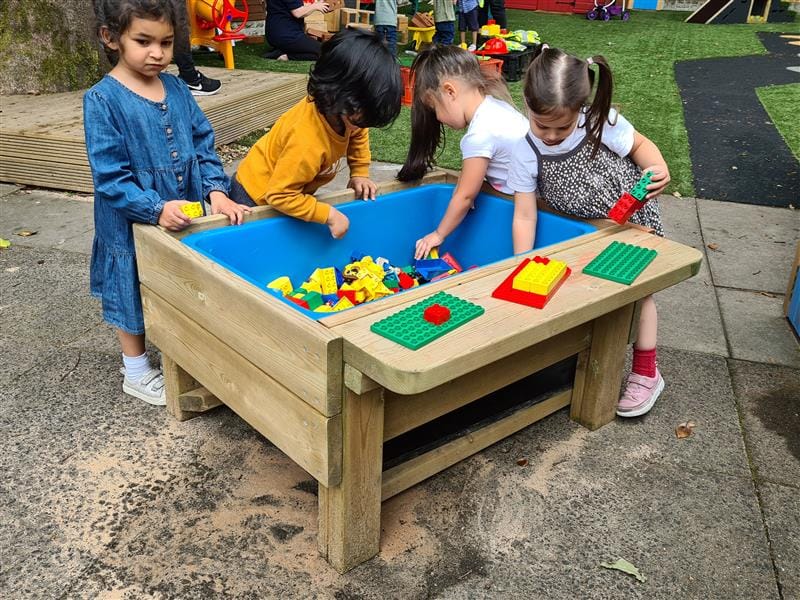
Children should be able to explain what known facts or mental strategies they use to calculate their answers.
Practise Skills at the Shop
Pupils will start to compare and recognise quantities using items in their shop, noticing for example there are more yellow cars than red cars or the blue ribbon is shorter than the green ribbon.
Pupils will then begin to make quantitative comparisons such as, ‘there are two fewer red cars than yellow cars.

A shop role play area provides the perfect environment for introducing fractions to children. Children will begin to use the language ‘a half’ and ‘a quarter’ Pupils will be able to practise serving half of a piece of toast or an apple, they can also use sweets to divide a group of items into equal parts.
Early Multiplication and Division
A Sorting Table is a useful resource when working with groups of children to introduce the concepts of multiplication and division. Pupils have plenty of space to look at collections of concrete objects and begin to identify equal and unequal groups.

Paper plates or hoops help to clearly demarcate the groups. Children could be set challenges which require them to work together such as, ‘How many different ways can you find to arrange ten cubes into equal groups?’
Beat the Clock!
Pupils can begin to read, say and write decimal numbers with Pentagon’s Solar Powered Stopwatch. Children will be able to clearly see how many ones/tenths and hundredths are in a number.
Groups of pupils can work together to time each other to complete a trim trail/obstacle course and gather their results. Times can then be ordered and rounded to the nearest whole numbers and to one decimal place.
When children see how maths is used in ‘real-life scenarios’ motivation, enthusiasm and confidence increases.
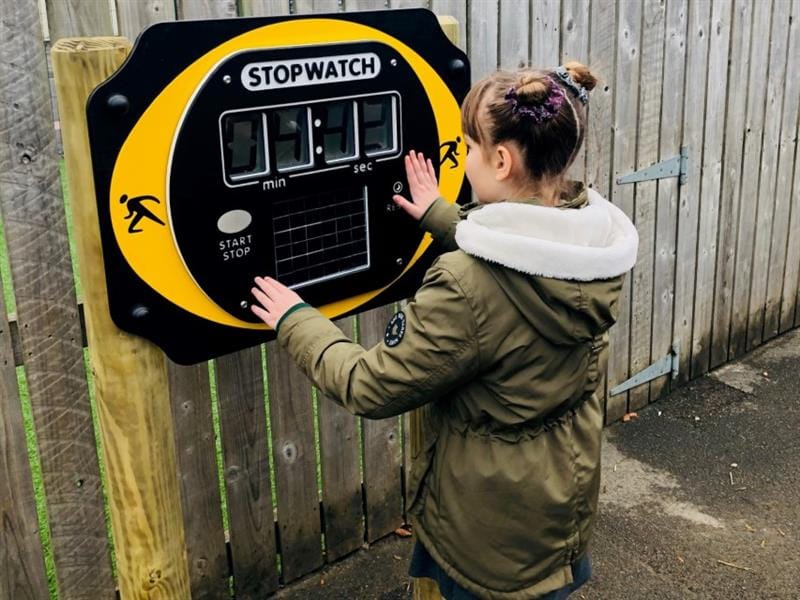
Early years foundation stage children can use a timer to explore what they can do within a set period of time. For example, 'I wonder how long it will take to complete one lap of the racetrack?' 'Will we be quicker next time?'
Explaining to children that the smaller the number of seconds the quicker the time is a difficult concept to grasp which will require practise in different contexts.
In order to develop an understanding of the passing of time children can count how many things they can do in a minute such as finding buttons in the sand pit.
Finding our Voices in the Outdoor Classroom!
A key component of ‘maths mastery’ is that children learn to effectively communicate their mathematical ideas. In doing so, they show an understanding of mathematical concepts and the ability to reason. Some pupils may be more willing to share their thoughts more freely when working in the outdoor classroom.
Effective Modelling
Teacher modelling is a useful tool to demonstrate expectations. The class teacher firstly models the answer to a question before asking a pupil to answer a similar problem using the same structure. This helps to set expectations and build pupils confidence.
Product Spotlight
Think, Pair, Share is a great strategy to use in the outdoor classroom which allows pupils to try out their ideas with a partner before sharing with the class, helping to develop confident mathematicians.
Asking children if they agree/disagree with an answer or if a problem can be solved in another way or more efficiently helps to create a classroom culture where mathematics is discussed and unpicked and builds positive relationships.
Asking pupils to talk about what they notice ‘What’s the same? What’s different?’ promotes classroom talk where children are looking for patterns and making connections.
Start Teaching Outdoors Maths Mastery Today!
The use of an outdoor environment can offer plenty of opportunities to develop ‘maths mastery,’ Large, tactile resources can be used in the outdoor classroom to help children to understand different problems, scenarios and relationships. Being outdoors encourages pupils to explore, wonder, try things out and discuss.
When mathematics relates to real-life situations and their own environment children are particularly engaged and will rise to the challenge of mathematical reasoning.
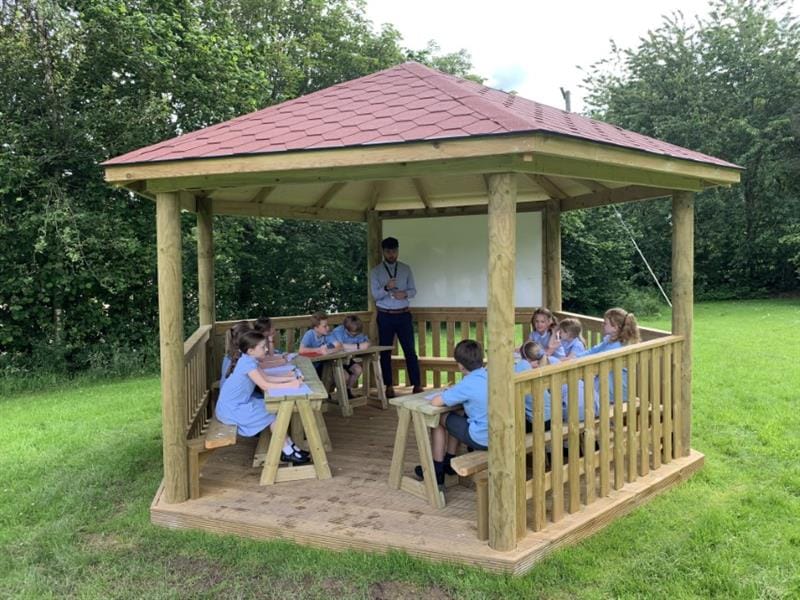
Maths mastery enables children to be able to apply their skills and knowledge to solve problems. Once children have mastered concepts they can creatively apply their thinking, choose the right approaches and apply mathematical skills to real-life situations.
.jpg)

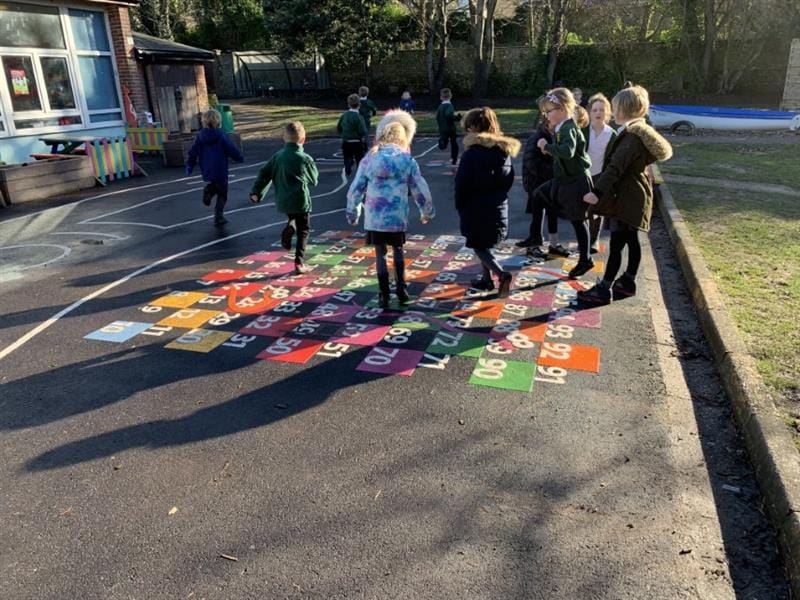


.JPG)
